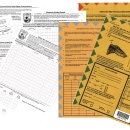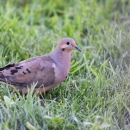
This report summarizes information collected annually in the United States on survival, recruitment, abundance and harvest of mourning doves. We report on trends in the number of doves heard per route from the Mourning Dove Call-count Survey (CCS), doves seen per route from the CCS, birds heard and seen per route from the all-bird North American Breeding Bird Survey (BBS), and provide absolute abundance estimates based on band recovery and harvest data. Harvest and hunter participation are estimated from the Migratory Bird Harvest Information Program (HIP). This report is the last year we report results from the CCS. The CCS was discontinued in 2013 because the harvest strategy adopted for mourning doves in 2013 does not make use of data from the CCS, but rather relies on estimates of absolute abundance.



